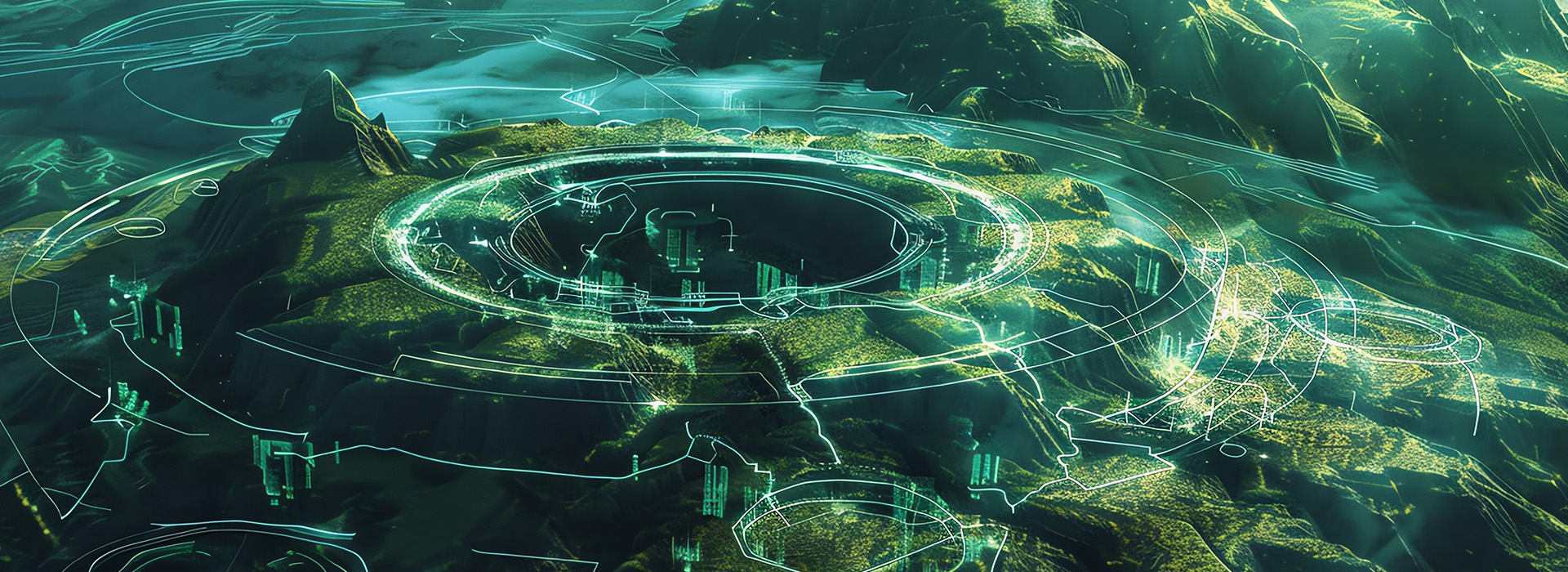Rethinking Spatial Intelligence: Inside Voxel Space’s Vision for Big Data in 3D

Voxel Space is at the forefront of spatial computing innovation, redefining how organizations manage, analyze, and visualize massive, dynamic datasets across both space and time.
At the heart of Voxel Space’s technology lies a mission: to solve the kind of Big Data problems that traditional systems simply weren’t built to handle.
These are datasets where the scope, resolution, and complexity—often involving millions of relationships evolving across time—demand a radically new approach.
Where Big Data Meets the Real (and Virtual) World
Voxel Space's technology operates at the intersection of two major industries:
- Geospatial, where engineers and analysts must model changing terrain, infrastructure, and environmental data over vast regions—sometimes entire nations—at incredibly high detail.
- Entertainment, particularly in the creation of expansive virtual worlds that evolve in real time, whether through simulation or user interaction. These dynamic environments often cover planetary-scale terrain and must support user-driven construction and deformation at voxel-level precision.
The Three Core Pillars of Voxel Space
To meet the demands of these complex domains, Voxel Space is built around three foundational principles:
01. Centralized Data
Voxel Space enables organizations to create a single, unified repository for all spatial data. This becomes the source of truth across departments, allowing distributed teams—regardless of location—to collaborate in real time.
More than just data storage, this represents a shift from an application-centric model to a data-centric one. Instead of scattering files across multiple software platforms and local machines, Voxel Space treats the dataset as a living object—versioned, time-aware, and ready for interaction.
This data-centric paradigm simplifies workflows, minimizes duplication, and lays the groundwork for automated processes that are traceable, scalable, and far less error-prone.
02. Centralized Visualization
Spatial insight is only valuable if it's accessible. Voxel Space delivers high-performance 3D visualization across browsers, tablets, mobile devices, and even AR/VR headsets—without requiring heavy software installations.
Users can interact with massive, high-resolution datasets from any device. Whether it’s point clouds, 3D meshes, geochemical models, or volumetric terrain, Voxel Space streams these visuals seamlessly using its proprietary compression and rendering engines.
The platform supports real-time mashups of diverse datasets, making it easy to overlay and explore layers like drill holes, environmental scans, infrastructure models, and historical data. Interactivity is built in—from time-based sliders to cross-sections and annotations—allowing for deeper insights on demand.
03. Massive Parallel Computing
At the core of Voxel Space’s performance is its ability to distribute computation across thousands of CPU cores. This means spatial operations that would normally take hours—or days—can now be executed in minutes.
Through a system of spatial lambdas (functions written in Python or C#), users can run complex simulations, data cleanups, exports, and custom logic across the full extent of their datasets. These serverless functions operate at scale, transforming trillions of voxels into usable intelligence—fast.
From national terrain models to evolving digital twins, Voxel Space doesn’t just visualize space—it computes it at speed and scale.
Why It Matters
Whether you're monitoring environmental change, building entire metaverses, or tracking asset evolution across industrial sites, Voxel Space empowers you to work faster, smarter, and with complete spatial confidence.
The platform was purpose-built to handle space, time, and complexity in ways no legacy GIS or graphics system can. And with cloud-native scalability, it grows with your mission, whether that’s simulating terrain collapse, visualizing underground utilities, or enabling real-time collaboration for global teams.
Ready to See the Future of Spatial Computing?
Explore what’s possible when data, visualization, and computing power come together seamlessly.
-
The End of Maps: Why 4D Digital Twins Are Taking Over
For centuries, maps have been humanity’s way of making sense of the world.From ancient parchment charts to today’s...
October 23, 2025By Voxel Space -
Unlocking Trillions of Voxels: The Power of Spatial Lambda
When working with volumetric datasets, scale is everything. Mines, cities, and infrastructure projects generate trillions of voxels, each...
October 16, 2025By Voxel Space -
Why Volumetric Spatial Solutions Are the Future And How Voxel Space Leads the Way
In the era of massive data, traditional 2D maps and surface models are no longer enough.Today’s world runs...
September 10, 2025By VoxelSpace


